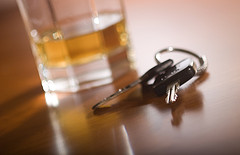 We talk about drunk driving fairly often on this blog. One reason is our commitment to advocacy — as a Sonoma injury law firm we are proud to advocate on behalf of those injured or killed by drunk drivers. Another reason is our commitment to prevention – drunk driving accidents are 100% preventable and we hope the information we provide helps convince people that alcohol and driving do not mix. Today’s post looks at a frightening drunk driving accident in Petaluma and then takes a closer look at the meaning of blood alcohol content (“BAC”) numbers and how they impact a person’s ability to drive.
We talk about drunk driving fairly often on this blog. One reason is our commitment to advocacy — as a Sonoma injury law firm we are proud to advocate on behalf of those injured or killed by drunk drivers. Another reason is our commitment to prevention – drunk driving accidents are 100% preventable and we hope the information we provide helps convince people that alcohol and driving do not mix. Today’s post looks at a frightening drunk driving accident in Petaluma and then takes a closer look at the meaning of blood alcohol content (“BAC”) numbers and how they impact a person’s ability to drive.
Driver Slams into Window of Petaluma Business
According to a report by CBS San Francisco, police arrested a man early Monday morning after a scary crash in Petaluma. Just after 1:30 AM, police responded to a call from the 100 block of Petaluma Boulevard North. When they arrived, they found a car had driven into the display window of a business which, luckily, was closed at the time of the incident.
Neither the driver nor his passenger were injured in the crash, but both the vehicle and the business incurred major damage. Police reported smelling alcohol on the driver’s breath and testing put his BAC at .20%. The driver was arrested on suspicion of driving under the influence.
Understanding BAC Levels
The Centers for Disease Control (“CDC”) provide a chart explaining the effects of alcohol on a typical individual. Per their chart, the following BAC levels can result in the listed effects and impact on driving (Note: The listed level is when an effect is typically first seen. Effects are cumulative and include the effects of the previous levels.):
- .02% (about two drinks*) – Results in relaxation, altered mood, bodily warmth, and some decline in judgment. Impacts on driving include reduced visual function and a lowered ability to multitask (an essential skill for drivers).
- .05% (about three drinks*) – At this BAC, people begin to show exaggerated behavior, some loss of small-muscle control (including difficulty focusing eyes), impaired judgment, reduced alertness, and lowered inhibition. In terms of driving, a person starts to exhibit impaired coordination, lowered ability to track objects in motion, trouble steering, and impaired ability to respond in emergencies.
- .08% (about four drinks*; the legal limit for drivers in all 50 states) – Poor muscle coordination, difficulty detecting danger, and impaired judgment, reasoning, memory, and self-control are all likely to occur. Driving may begin to be impaired by problems with coordination, loss of short-term memory, inability to control speed, lowered information processing abilities (e.g., responding to a changing light or unexpected pedestrian/vehicle), and impaired perception.
- .10% (about five drinks*) – Adds a clear drop in reaction time and control, slurred speech, impaired coordination, and slower thought processes. Additionally, at this BAC a driver begins to show a reduced ability to stay in their lane and brake as needed.
- .15% (about seven drinks) – The average person begins to exhibit far less muscle control than they have sober and a major loss of balance. Some may begin vomiting. Drivers with a BAC at this level experience a substantial impairment in the ability to control the vehicle, difficulty focusing attention on driving, and impaired visual and auditory information processing skills.
* The listed number of drinks are the average number of alcoholic beverages a 160-pound male would need to consume in one hour to reach the BAC indicated. See the CDC’s page for specifics on how much alcohol constitutes one drink.
Thoughts from Our Northern California Drunk Driving Injury Law Firm
Please remember, the information above represents an average hypothetical person; some people become much more impaired much more quickly and impairment for any individual can be intensified by factors from an empty stomach to a lack of sleep. Do not make the all-too-common mistake of assuming you are “good at driving drunk” – many have said that very thing right before causing a serious accident and the very nature of alcohol impairs your ability to judge your own driving skills.
It is worth reiterating what we said in the introduction to this post – drunk driving accidents are 100% preventable. Please, do not drink and drive. If you’ve been injured or lost a family member due to a drunk driver in Northern California, please call our experienced Bay Area drunk driving injury lawyer in Santa Rosa, Oakland, and San Francisco. We can help you get compensation and we can help you get justice.
See Related Blog Post:
To a Happy (and Safe!) Holiday Season: A Reminder About the Danger of Holiday Drunk Driving
Pedestrians and Drunk Drivers: A Dangerous, Often Deadly, Mix
Behind the Statistics: Drunk Driving Victims and Perpetrators
(Image by James Palinsad)
 San Francisco Injury Lawyer Blog
San Francisco Injury Lawyer Blog

